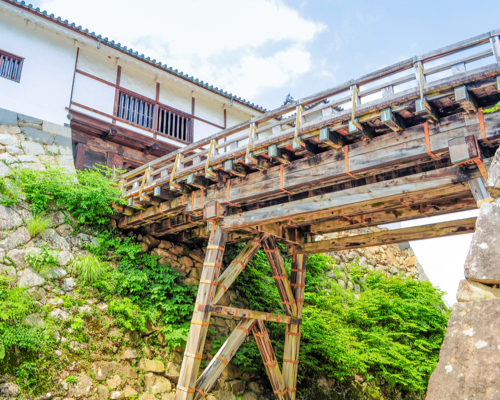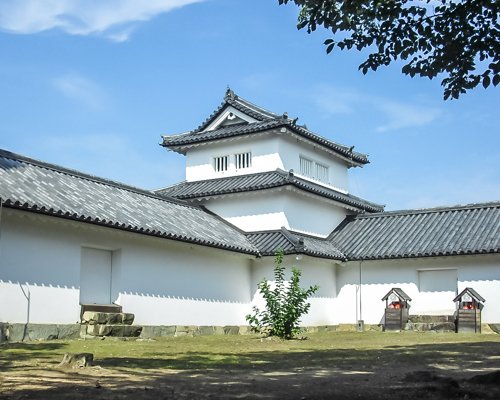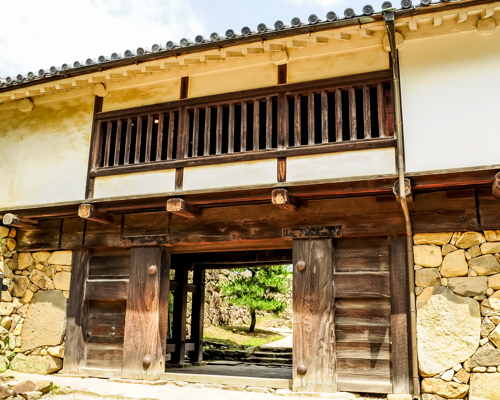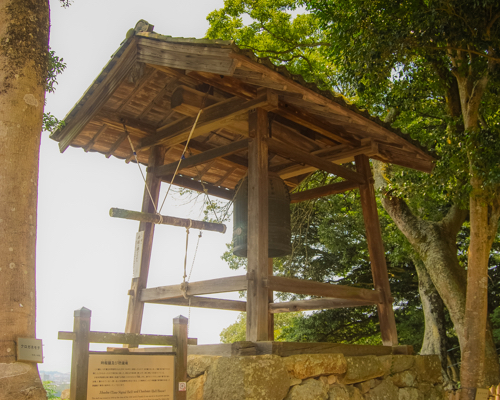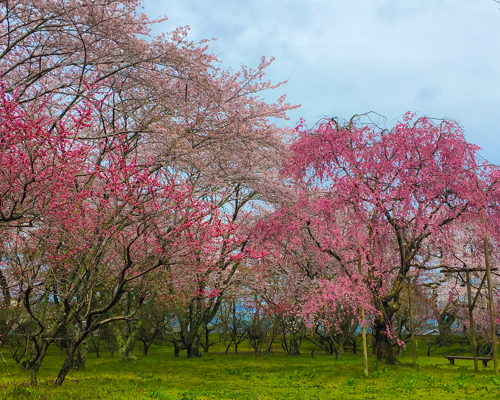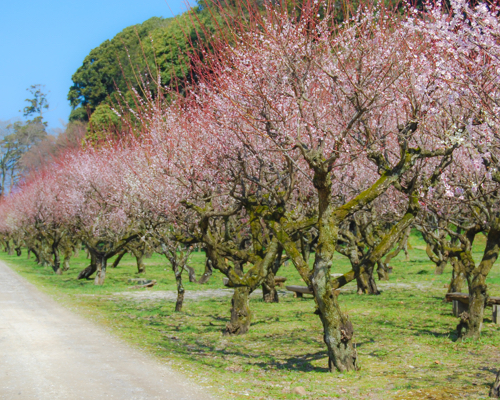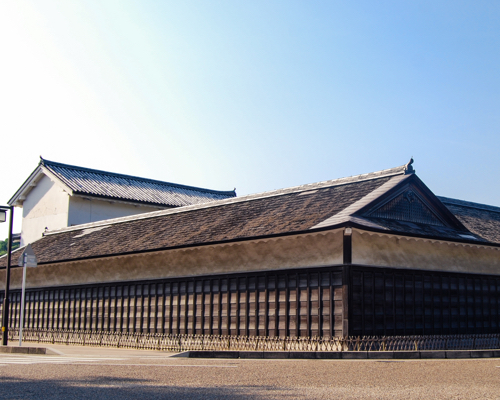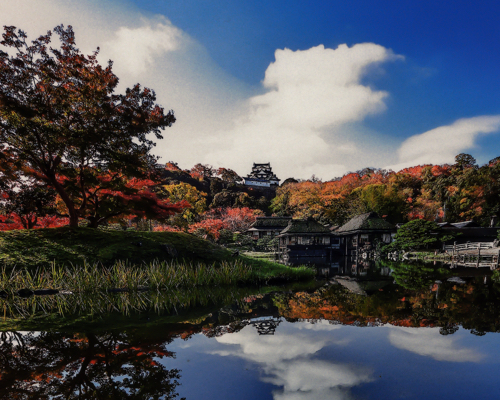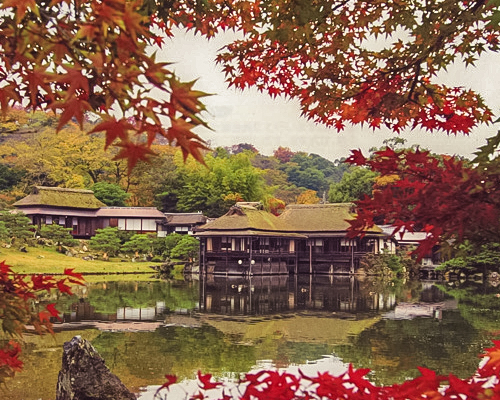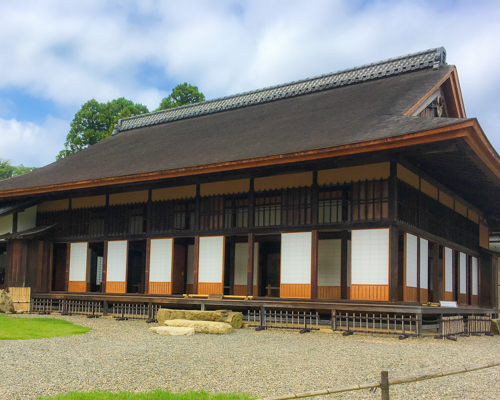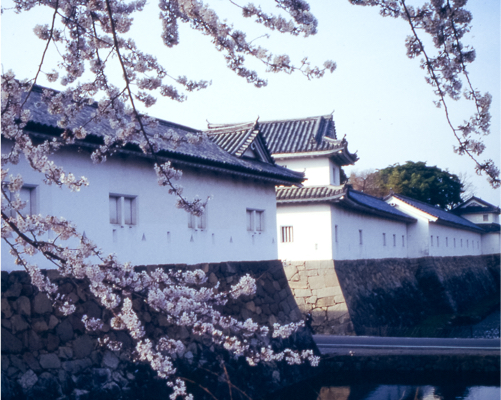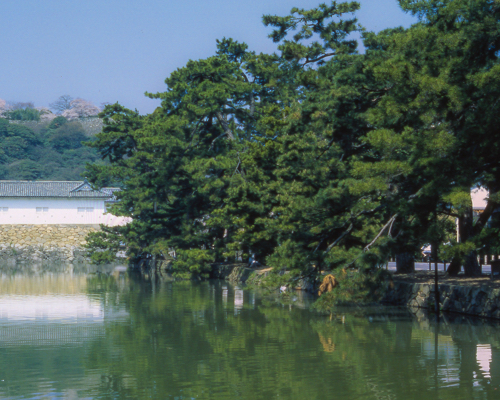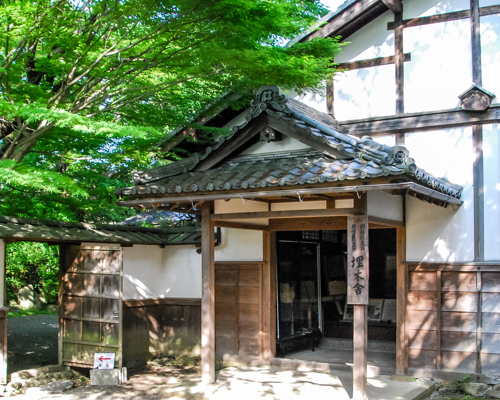- Top
- Castle
- MAP
Hikone Castle
Map
Japanese castles were the military, political, and economic centers of an area, and were ruled by a Lord. Hikone Castle is a well-preserved example of such a castle as it was not only a military hub in that it had defensive structures, such as a main keep and moats, but was also a political and cultural center with a day palace and residence for the local Lord; as well as an economic center with its base in the castle town.

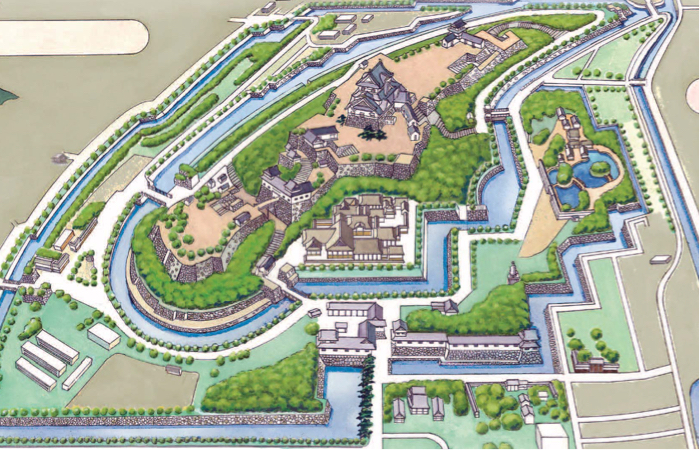
1Balance Turret
The balance turret (tenbin yagura) is so-named for its unusual shape, resembling a pair of balance scales.
See detail2Nishi-no-Maru Three-Story Turret
The area to the west of the main castle tower is called Nishi-no-Maru, or the west-wing fort. This three-storied turret is built at its west end, atop a 10 meter high stone wall.
See detail3Drum Turret
The drum turret (taikomon yagura) forms the last gate leading to the main bailey (an enclosed courtyard) , and is so named because it housed a great drum, used for communication across the castle grounds.
See detail4Time-Keeping Bell
Even today, this bell tolls five times a day to announce the hour to those within hearing distance.
See detail5Kannon Terrace
This was once the location of Hikone Temple, constructed long before Hikone Castle in 710 by Fujiwara Fusasaki, a government official.
See detail6Yamazaki Enclosure
The Yamazaki Enclosure is so named because it stands at the highest point of the hill (“yama,” or mountain).
See detail7Plum Grove
While today this area is a beautiful grove of plum trees, many years ago it was the location of storehouses for rice. This rice represented not only food, but the Ii family’s great wealth: the rice was their stipend from the shogunate, counted in a unit called “”koku,”” which represented the amount of rice required to feed one person for a year. The stipend for the Ii family’s territory was valued at 300,000 koku.
Today in the plum grove, about 450 pink or white plum blossoms can be seen annually from mid to late March. The trees were planted in commemoration of Hikone Castle’s selection as one of the 100 Best Sightseeing Places in Japan.
8Stables
The stables at Hikone Castle are located near Genkyu-en Garden and the lord’s villa, near which the horses would be trained and were cared for by workers known as “uma-yaku,” who also assisted the castle lords when they rode.
See detail9Genkyu-en Garden
A beautiful pleasure garden beside the castle lord’s residence, Genkyu-en Garden was built around a large pond with features such as islands and inlets joined by bridges, and was designed to be walked through.
See detail10Hosho-dai Guest House
The lords of the Hikone Clan entertained their most distinguished guests at the guest house, known as Hosho-dai, which commands a fine view of the entire Genkyu-en Garden and the castle’s main keep.
See detail11Rakuraku-en Villa
This palace was built in 1677 by Naooki Ii, the 4th lord of Hikone, as his second residence.
See detail12Sawaguchi Tamon Turret
Visitors to Hikone Castle via the Iroha-matsu Pine Avenue will see the turrets of this wall across the moat as they approach.
See detail13Iroha-matsu Pine Avenue
These pine trees line the avenue along Hikone Castle’s outer moat and the avenue leading to the Sawaguchi Tamon Turret.
See detail14Umoregi-no-ya
This is the lodge where Naosuke Ii, the 13th lord of the Hikone Clan, spent his days in ascetic style from the age of 17 to 32, applying himself to the pursuit of learning and martial arts.
See detail

